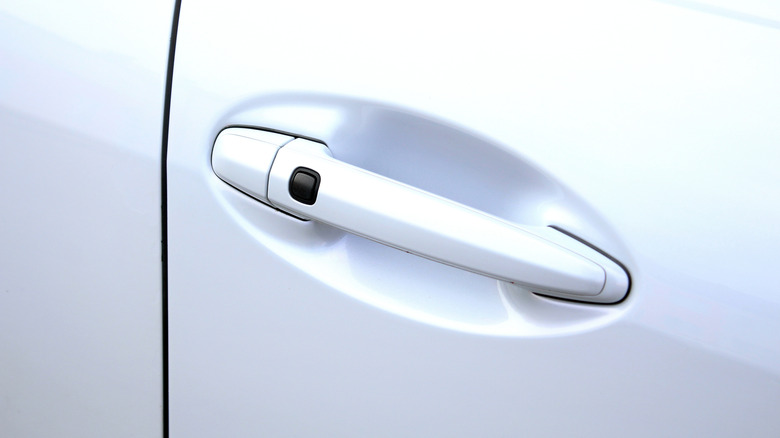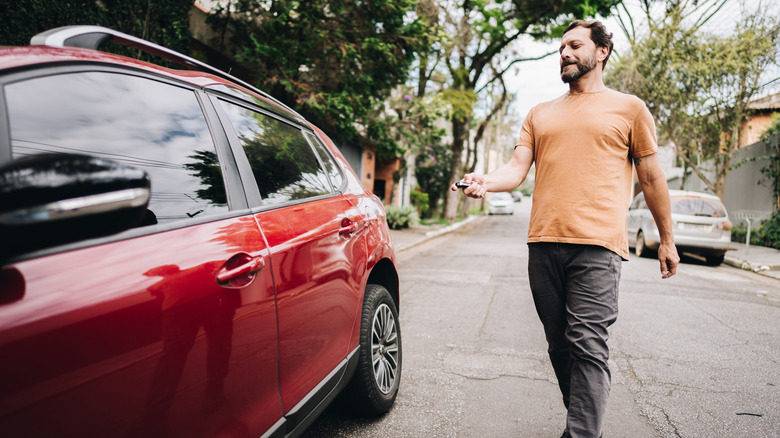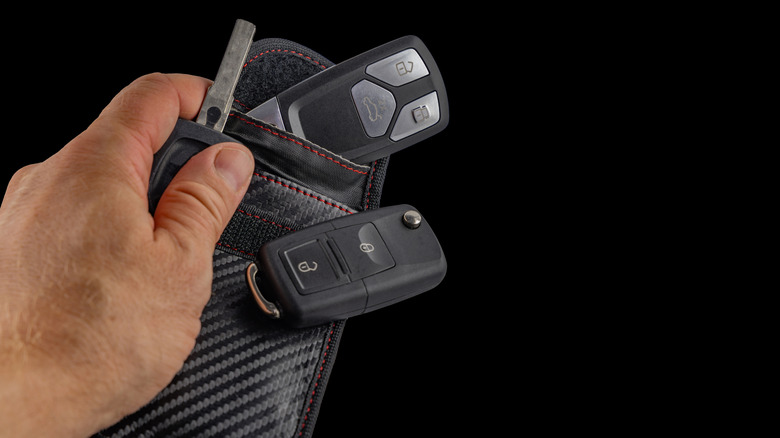What Is That Little Button On Your Car Door Handle For?
Cars these days incorporate numerous features to make our lives safer and more convenient. For instance, electronic stability control, emergency braking, and forward collision warnings are among the best modern car safety features. These typically work without the need for any engagement from the driver and are activated only when the systems deem it necessary. However, not every feature is as intuitive or autonomous. Some require drivers to first understand their inner workings before actually using them.
A great example is keyless entry via button, a feature that lets drivers lock or unlock the doors by pressing a little button on the door handle, without having to take the key out of their pocket. More modern systems even get rid of the button entirely and work by simply touching the door handle. Here is everything you need to know about car keyless entry — how it works, why it is useful, and if it can be trusted.
The functional benefits of keyless entry
The keyless entry process starts with the car recognizing and authenticating a key when it comes close to the vehicle. Most systems use RFID technology or related encrypted communication protocols to establish the connection between the key and the vehicle. The car then checks for authorization by determining what a recognized key is allowed to control. Once a correct and secure connection is established, the system allows for the car to be locked or unlocked via buttons on the door handles.
The benefits of keyless entry are fairly self-explanatory since the system allows you to lock and unlock the car without pressing any keys on the key fob. This practically eliminates hot-wiring as a means to steal a car while also allowing drivers to benefit from automatic locking. Automatic locking is especially useful since it works by locking the vehicle once the key leaves its vicinity, even if you forget to lock it.
Although this feature is typically found in more modern cars, remote keyless entry can also be added to classic cars or retrofitted to those that didn't get it from the factory. Moreover, keyless entry is often paired with keyless start, a system that lets drivers start the car remotely or with the push of a button instead of a traditional key.
Keyless entry safety and security concerns
Speaking to CBS News, cybersecurity expert Jack Reedy explained that thieves are "capturing the radio signal from your key fob and then they are playing it again next to the vehicle, [which] allows them to drive away with it." This means that, even though these features eliminate more traditional means of car theft, they do introduce new vulnerabilities, some of which can be extremely easy to exploit.
Thankfully, there are a few tips and tricks you can use to spot thieves targeting your car before it's stolen. You can use signal-blocking Faraday bags to store your key fob, park your car more strategically, or install alarm systems that work by deterrence. For a thief to even be able to recognize the signal, it needs to be in a relatively close proximity, so always be vigilant about who is standing near the vehicle. Thieves can also use signal jammers once you exit the vehicle in order to disengage the system when you try to lock it.
Therefore, always check whether the car has actually been locked after you press the button. Lastly, it's also wise to consult your insurance policy, as some companies may require owners to take certain precautions, such as using Faraday bags to store keys. A lack of forced entry, as with signal theft, can often be grounds for denying coverage or make it difficult to prove personal belongings have been stolen from the car.


